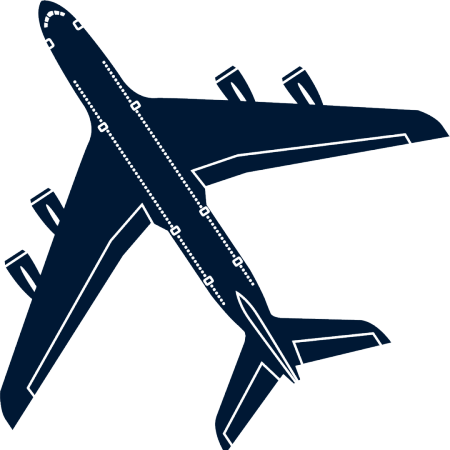Environment
Environmental issues are a priority at Swedavia, and Malmö Airport works continuously in a number of different areas to reduce its environmental impact.
Swedavia's climate work
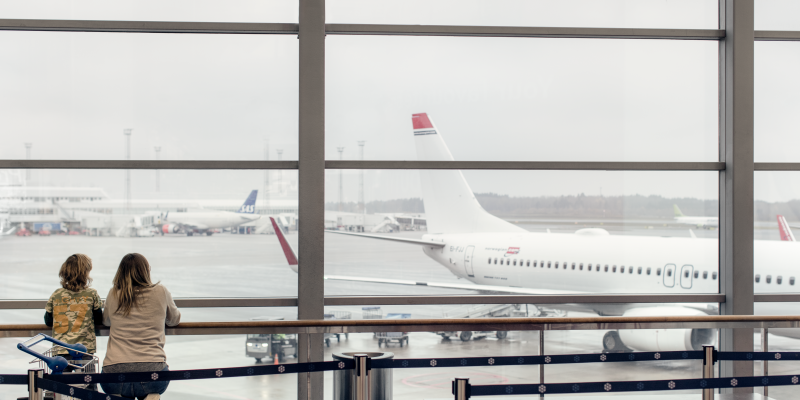
Our zero vision
In 2020, Swedavia achieved the company’s goal of no fossil carbon dioxide emissions from airport operations run under our own management.
Extensive work underpins our success in achieving zero fossil carbon dioxide emissions. We purchase green electricity for all our operations, the back-up power supply runs on hydrotreated vegetable oil (HVO), our vehicle fleet runs on HVO, fossil-free gas or green electricity, and we purchase liquefied petroleum gas (biogasol) and biogas.
Expanded climate work
All of Swedavia’s airports are accredited at the ACA 4+ level in accordance with Airport Council International (ACI) Europe’s standards for the climate work of airports. That means our airports continuously reduce fossil carbon dioxide emissions from their own operations, offset the emissions that have not yet been reduced and help other businesses operating at the airports to reduce their emissions. At the end of 2020, we achieved our fossil carbon dioxide emissions goal for airport operations run under our own management.
The next goal is to have all the airports accredited at the ACA 5+ level, which means that compounds to de-ice runways/aircraft and coolants are to be included in the measurements. We shall also work to a greater extent to engage and work together with other companies and organisations that have significant carbon dioxide emissions at the airports in order to continue reducing emissions together. Over time, all the operations at our airports will switch to renewable energy sources. This work is in line with the International Panel on Climate Change’s goal not to exceed a 1.5 degree rise in global warming as well as Swedavia’s strategy and goals for proactive climate change adaptation.
Facts about Airport Carbon Accreditation (ACA)
- Airport Carbon Accreditation is a framework within Airport Council International (ACI) which evaluates airports' work with handling and reducing their carbon dioxide emissions. The framework has six levels.
- The set certification requirements for ACA4+ includes adapting the airport's handling of carbon dioxide to the Paris Agreement as well as an inclusion of further emission sources in the airport's climate footprint that covers all considerable operational emissions from a third party. The emphasis is on creating effective partnerships with airport actors to reduce emissions. The initiated partnership plan that contributes to the change for the airport's partners as well is a prerequisite for the certification.
- Six of Swedavia's ten airports have been certified at the highest level, ACA5+; Stockholm Arlanda Airport, Göteborg Landvetter Airport, Malmö Airport, Åre Östersund Airport, Visby Airport and Kiruna Airport. The four remaining airports - Bromma Stockholm Airport, Luleå Airport, Umeå Airport and Ronneby Airport - will be certified according to ACA4+ during 2023 and 2024.
- Stockholm Arlanda Airport was one of 17 airports that joined the framework at its start in 2009. Göteborg Landvetter Airport joined in 2010. Both airports were immediatly put in the, then, highest level of the framework, ACA3+ and Swedavia became the first airport concern in the world to become fossil free in their own operation at the end of 2020. Stockholm Arlanda Airport also became the first airport to accept ACI's newly constituted ECO Innovation Award in 2010, a distinction the airport also received in 2021.
Environmental impact
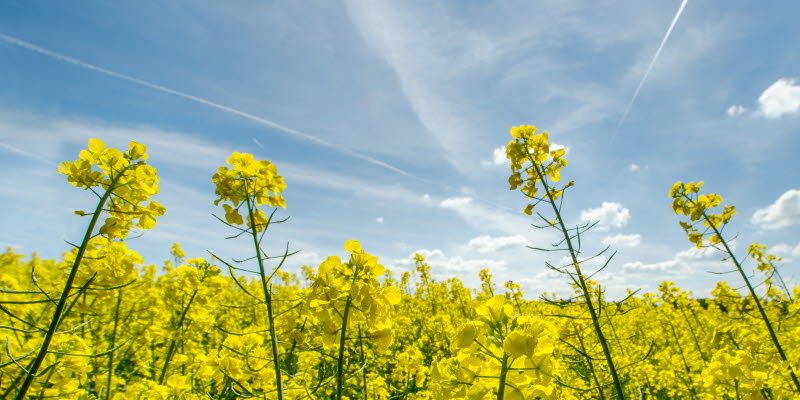
Climate change is a key issue for the development of civil aviation, and Malmö Airport works actively in several areas in order to minimise the negative environmental impact of our operation.
Noise
Information about aviation noise
Aviation noise occurs when aircraft take off and land, during flyovers and during apron activities such as taxiing and engine testing. Noise on the ground is loudest during take-off since that is when the engine revs hardest. Landing does not require a lot of engine revs, but it nonetheless creates loud noise on the ground during the last phase of the approach because the aircraft is at such a low altitude.
Environmental permit for aviation noise
The flight paths to and from the airport are determined in the environmental permit so noise generated by the aircraft will create as little disturbance as possible. Flight path follow-ups take place on a continual basis and are reported quarterly via the County Administrative Board of Skåne, which is the permit-issuing authority. Every airport has terms and conditions relating to operational noise. For Malmö Airport this means that housing located closest to the most affected areas is given additional noise insulation.
Quiter planes are rewarded
Swedavia has implemented a pricing system whereby it is cheaper for airlines to use modern, quiet aircraft than older, noisier ones. Internationally, work is continuously ongoing to reduce aviation noise. For example, the noisiest aircraft are no longer allowed to use airports within the EU. This has persuaded airlines to replace ageing aircraft with modern, quiet alternatives.
Air
Emissions from air traffic
Aircraft engines produce the same kinds of emissions generated in the combustion of all fossil fuels: carbon dioxide, nitrogen oxides, hydrocarbons, soot, particulate matter, carbon monoxide and sulphur dioxide. Sometimes the air at the airport may smell strongly of jet kerosene. What makes it smell like kerosene is sulphur compounds, known as mercaptans, which have a penetrating, intense and characteristic smell in very small concentrations. Sulphur compounds belong to the same group of substances that create odour problems in conjunction with paper pulp production (using the sulphate process). Mercaptans are not toxic in the low concentrations found at the airport.
Modern planes with lower emissions given preference
One way to reduce atmospheric emissions from air traffic is for Göteborg Landvetter Airport to encourage airlines to use modern aircraft that are better for the environment – take-off charges are lower the less nitrogen oxides and hydrocarbons an aircraft’s engines emit. The aim is to motivate airlines with older planes with old engines to switch to modern planes with cleaner engines.
The aircraft’s whirlwinds are not fuel dumping
All aircraft leave whirlwinds in their wake. When the weather is humid, the whirlwinds are visible since condensation is formed from water steam in the air. It may sometimes look like the aircraft is releasing fuel as it lands.
Aircraft very rarely dump fuel and only in an emergency, when a fully fuelled plane needs to make an emergency landing. Only the largest aircraft have the ability to dump fuel. If fuel needs to be dumped, this should take place over water and at an altitude high enough to enable the fuel to be converted into steam before it reaches the earth.
De-icing of aircraft and runways
Discharges to water take place primarily in the winter when the aircraft and runways are de-iced for aviation safety reasons. Aircraft are de-iced using propylene glycol. The runways are primarily cleared by mechanical means – with snow-ploughs, rotating sweepers, snow-blowers and gritters. If this is not sufficient, potassium acetate is used. Urea too is used for de-icing for reasons of aviation safety in particularly difficult weather conditions. These substances have low toxic levels, are easily biodegraded in nature but have a high oxygen consumption rate during their breakdown. They may therefore cause oxygen deficiency in watercourses and in the water table if there are large-scale discharges.
Remaining glycol liquids
The glycol that remains on the soil when an aircraft is de-iced is collected and emptied into a leak-proof pond, from where it is sent to the Svedala treatment plant where it is used as a carbon source in its filtration processes.
Storm-water
The storm-water from the airport apron is processed in an aerated holding pond located near the approach road to the aircraft. In this aerated pond, any residual acetate and glycol are broken down to avoid oxygen deficiency in creeks and brooks downstream from the airport. The holding pond also serves as a settling tank for particulate-rich heavy metals and as an oil trap.
PFOS
Background
Perfluorinated substances have been used for about 50 years in surface finishes of textiles, cleaning agents, kitchen utensils and firefighting agents as well as to coat food packaging, for example. PFOS (perfluorooctane sulfonate) is one of the most widely known substances and has been used for firefighting foam, among other things. In recent years, it has been found that PFOS can be harmful to animals. There may also be a risk of it being harmful to humans, although no such harm has been identified so far. We all have some level of PFOS in us from the food we eat and sometimes from different chemical products that enter our system in a different way. PFOS can therefore be measured, for example, in our blood.
PFOS at Malmö Airport
Fire extinguishing foams that contain PFOS has not been used in firefighting exercises at Malmö Airport since 2008. The airports firefighting exercise site has been equipped with a compact base slab that collects the water and foam that ends up on the slab ever since the 1970's when it started to be used. Collected water is pumped from the site via and aired dam to Svedala treatment facility. Regular checks at the airport, however, have shown that PFOS has leaked into the ground by the firefighting exercise site and its surroundings. There is a high probability that this is due to the fire extinguishing foam previously used.
Due to PFOS being found outside the collection system at the firefighting exercise site, controls of the stormwater leaving the airport were expanded in 2009. As the initial samples of stomwater showed higher levels of PFOS here as well, concerned parties such as the County Administrative Board, municipalities, fishing organisations, water conservation coalitions and neighbours were informed.
What has been done?
Since January 2012, Swedavia has a coal filter installed at the firefighting exercise site to minimise the spread of PFOS to ditches and waste water. In the spring 2013, a system for better collection was put into effect. Swedavia has and will continue to take samples of water and fish in the lakes for several years. The results are presented to the County Administrative Board and the reference group. Within a few year, it will be possible to judge how the levels of PFOS decrease in the surface water surrounding the airport.
Since June 2011, all use of fire extinguishing foams containing PFOS are prohibited in the EU.
Energy
How the facility works
The facility at the airport consists of a solar heating unit and a boiler system. The boiler system consists of four boilers. The two main boilers, each with a 2.5 MW capacity, use fuel in the form of pellets. The 4 MW backup and peak-load boiler uses biofuel in the form of vegetable oil or EO1. In 2013, a small boiler of 500 kW will be installed. It will be used mainly during the summer along with the solar heating unit.
During most of the year, heat is also supplied by the solar heating system. This delivers up to about 300 kW and consists of 5,600 vacuum tubes. The airport chose vacuum tubes for two reasons. Firstly because they produce more heat than a corresponding area of flat solar panels, and secondly because they meet the airport’s safety requirements: the vacuum tubes do not produce reflections that might distract aircraft in operation.
The heat produced is delivered via the internal district-heating infrastructure that covers the entire airport. It is then used to provide hot water and central heating at each respective building throughout the airport.
The facility has been partly financed through grants from the Environmental Protection Agency and the County Administrative Board/National Board of Housing, Building and Planning. The Environmental Protection Agency regarded this project as worthy of the Golden Nugget award and accordingly provided an investment grant of 6 million kronor for its implementation. The County Administrative Board/National Board of Housing, Building and Planning provided investment support to the tune of 3.4 million kronor.
The biofuel unit came on stream in 2007 and the solar heating system started operating in autumn 2008. In 2011 the facility supplied about 220 MWh to the internal district-heating network, corresponding to the energy consumption of 15 normal-size villas.
Honey bees
Background
The honey bee is regarded as a reliable indicator of chemical pollutants in the environment. The bee's products, such as honey and beeswax, store pollutants that can be subsequently analysed in the laboratory. Since bees range over a large area, often a radius of up to four kilometres, bee and honey samples are regarded as accurately representative of local environmental conditions.
The project
The project started in 2007 with the aim of identifying and evaluating a method whereby bees and their products could be used as indicators of air quality. In 2009 an initial series of analyses was conducted on honey and beeswax from three different locations. One set of samples was taken from Malmö Airport and two reference samples were taken from Staffanstorp and Skoghem near Gårdstånga. The aim of the analyses was to see if there are any differences between the samples taken from Malmö Airport and the reference sites, and also to compare the results from a consumer perspective.
Substances such as heavy metals, volatile organic hydrocarbons (BTEX) and polyaromatic hydrocarbons (PAH) were analysed. Emissions of these substances can occur during combustion of aviation or vehicle fuels and in the various day-to-day operations at Malmö Airport (such as when handling fuel, resurfacing roads and runways, handling solvents or in the cleaning and cooling systems).
The result
Analysis of the BTEX, HMF and heavy metal results showed that from the consumer perspective, all the figures were below the set EU limits. In many cases, the concentration was so low that the substances could not even be detected. When the samples from Malmö Airport and the two reference sites were compared, the results indicated some cases of higher concentration at the airport while other concentrations were lower. Of the analyses conducted thus far on the honey and beeswax, it is not possible to draw any conclusions as to whether and if so in what way Malmö Airport affects local air quality.
Waste
A large proportion of all the waste generated constitutes a resource that can be reused, recycled or recovered via energy generation. Hazardous waste is handled separately to ensure that dangerous substances are not spread.
In the terminal building, passengers sort their waste into four categories: newspapers, aluminium cans, PET bottles and combustible waste.
Environmental permit
In November 2013, the Land and Environmental Court at Sweden’s Svea Court of Appeal approved Swedavia’s application for a new environmental permit for Malmö Airport. The change sought by Swedavia mainly involved the possibility of carrying out refurbishments and additions to facilities in the airport area and allocating aircraft movements over a 24-hour period, which means the continued development of Malmö Airport’s operations for a long while.
The number of aircraft movements allowed is unchanged compared to the previous permit – a total of 77,000 aircraft movements are allowed, 40,000 with heavy aircraft.
Land and Environmental Court’s ruling (pdf, in Swedish)
Final conditions for cadmium partial judgement 2022-02-28 (in Swedish)
Final conditions for stormwater partial jugement 2021-03-28 (in Swedish)
Final conditions for storm water and glycol partial judgment 07/08/2020 (In Swedish)
Environmental certification & report
Environmental certification
On March 1, 2006, Malmö Airport was certified for its environmental performance under ISO 14001:2004. This certification indicates that the airport has not only complied with the requirements of environmental agencies but also with the general and specific environmental goals set for Malmö Airport. Both internal and external environmental audits are carried out at the airport. The aim of these is to check whether the environmental management system is used, is sufficient and is effective. There is continuous improvement work under way, with increasingly stringent requirements, which means environmental goals are also raised every year. Airport management monitors this environmental work in its management review two times a year.
In May 2012, all of Swedavia was certified for its environment performance through its Group-wide environmental management system under ISO 14001.
Environmental report
Malmö Airport Environmental report 2024 (pdf)
Appendix 7 - Status report PFAS (pdf)
Appendix 8 - Resultat PFAS investigation (pdf)
Appendix 9 - Action programme Cd (pdf)
Appendix 10 - Aviation noise survey 2022 (pdf)
Please note that the environmental report is in Swedish.
Purpose and objectives
Swedavia owns, operates and develops airports and properties near these airports in Sweden. We strive to continuously improve our management system (ISO 14001) to minimize our environmental impact and use resources in a sustainable manner throughout the value chain. This is done
primarily by reducing greenhouse gas emissions, minimizing other atmospheric emissions and discharges to soil and water and minimizing the use of harmful chemicals. We shall even secure effective management of resources in order to contribute to circular economy and continuously work
to improve energy efficiency.
For us, it is a given that we comply with environmental and energy statutes in effect as well as other applicable national and international regulations and requirements. It is also a given that we ensure access to the information and resources required to achieve our environmental and energy objectives
and targets. We shall also work to limit aircraft noise and emissions from aircraft operations.
In order to achieve this, working in accordance with the following
fundamental rules is required:
- Environmental concern is integral to every part of operations and is taken into consideration in every decision.
- The most important environmental issue for the aviation and real estate sectors is their climate impact, and this must be given priority in decisions and activities.
- We shall continuously improve energy efficiency and manage our own operations as well as influence other companies and organizations that we interact with for the sustainable use of resources.
- We shall purchase energy-efficient products and services and promote construction that leads to better energy performance.
- All of Swedavia's employees shall take part in our environmental and energy work.
- We shall assess and manage environmental risks and energy performance in a systematic manner.
- Swedavia shall take an active part in local, regional, national and international work in order to reduce the aviation industry's negative impact on the environment and work for the sustainable development of airports.
Nature conservation
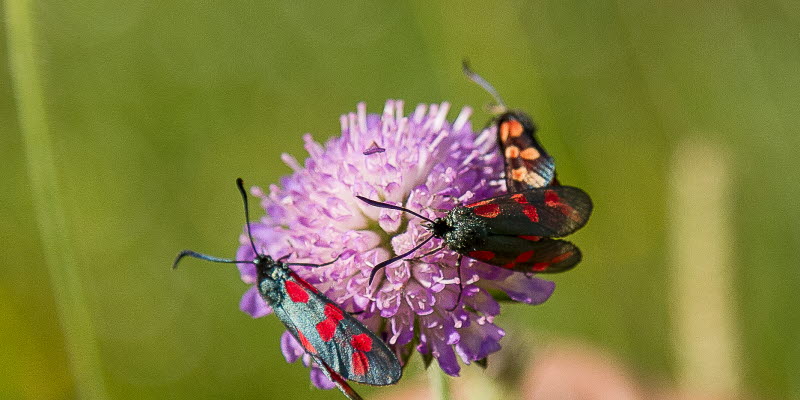
In 2014, a survey of grass- and scrublands at the airport showed that there is good potential to enhance the natural assets found here. The groups of species investigated included beetles, aculeates (insects with stingers), butterflies and vascular plants, that is, plants with lignified tissues such as herbaceous plants, bushes and trees.
Great variation in both plants and insects
The results show that there is great variation in the composition of both plant and insect species. There is also what is known as an indicator species which lives in the grasslands that abound with flowers in the airport area. An indicator species is a species that is useful for identifying and distinguishing areas with a high level of natural assets.
A total of seven species of insects were found that are included on the European Red List of threatened species, as well as one plant species slender sandwort. Red Listed species are species that are threatened with or risk extinction.
Many species and habitats have a significant nature value
Four habitats have been identified as areas of significant nature value, that is, which are important for biological diversity. Four species were put forward as species of value to natural conservation since they have some nature value connected to the airport’s grasslands. The species of value to nature are the listed black-headed mason wasp, the solitary West Palaearctic ground-nesting bee Melitta leporina, the moss carder bee and the narrow-bordered five-spot burnet, a moth.
Good potential to enhance the area’s high nature values
- There are some open lands without ground-covering vegetation which are often disturbed by human activities, what are known as ruderal environments, that provide interesting vegetation and different habitats for certain insects.
- Grasslands are generally bountiful to be considered grassland, but parts of these lands are semi-arid, with an abundance of species that live in dry habitats.
- The large area of grasslands covering 160 hectares at the airport is an important source of flowers for many insects.
Conclusion
The surveys carried out in 2014 have generated useful data about the different types of biotopes (habitats to which certain plant or animal communities belong) and species and determining what suitable measures. The conclusion drawn from the field surveys and the discussion with field staff is that there is good potential to promote and enhance the high nature value of species and habitats found at Malmö Airport by modifying operations.
Track flights
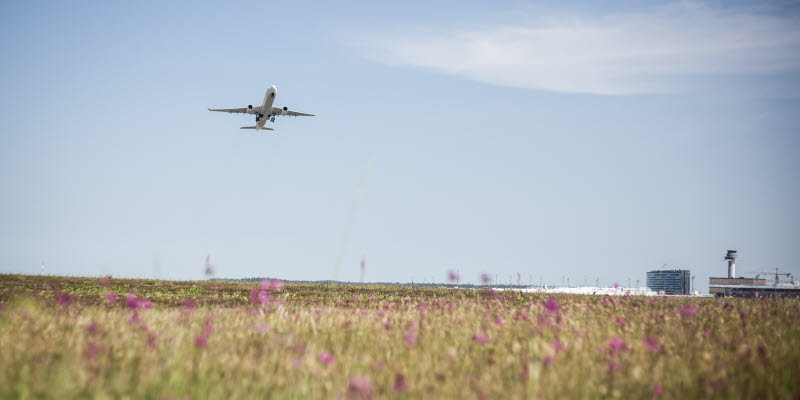
One public tool available for use is Flightradar24.com.
The Webtrak tool that we previously made available here on our website is being reviewed, and we are exploring the possibilities of using other data sources. This is in order to once again enable people living in the vicinity of our airports to track air traffic movements and link this information to aviation noise measurements where available.
